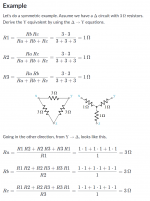Thanks for the insight! I guess I am surprised by this and my gut is telling me this is a bad idea but I am having trouble coming up with any legitimate reasons. The first thing I think of is losses. The conductors themselves between the substation wye txfr and the distribution delta acting as a resistive load and enabling a circulating current. Maybe an inherent impedance mismatch between the transformers? I mean, transformers that convert from wye to delta exist all over just fine but they also have a core that acts as the interface. But here the interface is distribution lines, which I suppose in this case, is forced to act like a core?
The other thing is... why? Why connect a delta txfr to a 4-wire wye distribution system only to convert it to wye again on the secondary side? Just to avoid having to run a neutral? Work practice/safety?
I haven't even begun to think about the implications of taking a single phase lateral off this setup. But again, I'm an idiot and I am probably just creating some high school drama in my own head. I mean, these systems have been in operation for ages.


